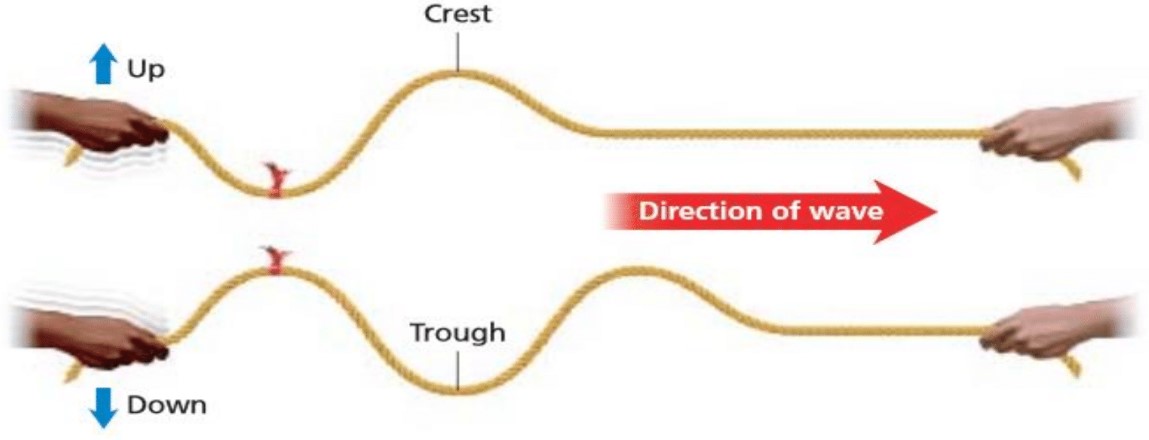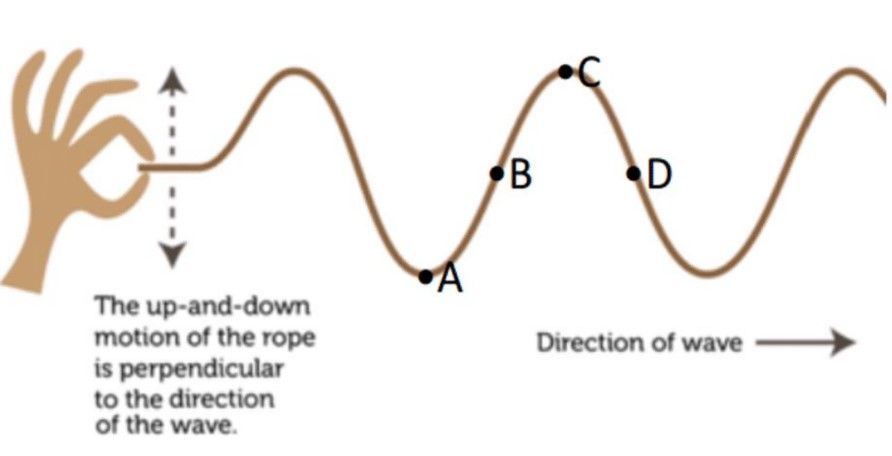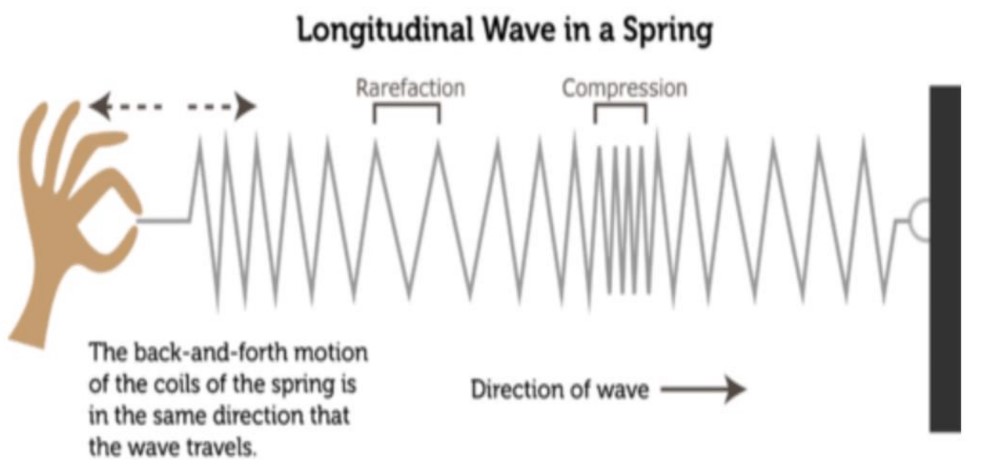In this lesson, we will learn:
- What are waves?
- Mechanical Waves VS. Electromagnetic Waves Vs. Surface Waves
- Transverse Waves VS. Longitudinal Waves
Notes:
- Definition of wave
Rhythmic disturbances that can travel through matter. (The matter does not transfer). Energy is transported from one location to another.

- Mechanical Waves VS. Electromagnetic Waves
- Mechanical Waves
Mechanical waves need medium (substance) to transfer, Example; Sound waves, Water waves. - Electromagnetic Waves
Electromagnetic waves do not need medium to transfer, they can travel trough vacuum, Example; Radio waves, Microwaves, Infrared, visible light, ultraviolet, X-rays, and Gamma rays.
- Mechanical Waves
- Transverse Waves VS. Longitudinal Waves Vs. Surface Waves
- Transverse Waves
Direction of motion of particles is PERPENDICULAR to the direction of motion of wave.

- Longitudinal Waves
Direction of motion of particles is PARALLEL to the direction of motion of waves.
Note: All electromagnetic waves are transverse waves, for example: radio waves, x-rays
Note: Some mechanical waves are transverse waves, for example: water waves, vibrating spring

- Surface Waves
They have the characteristics of both longitudinal and transverse waves.
Example: ocean waves are longitudinal, at the surface, but particles move in both parallel and perpendicular to the direction of wave motion.
Note: Some mechanical waves are longitudinal waves, such as: sound waves






